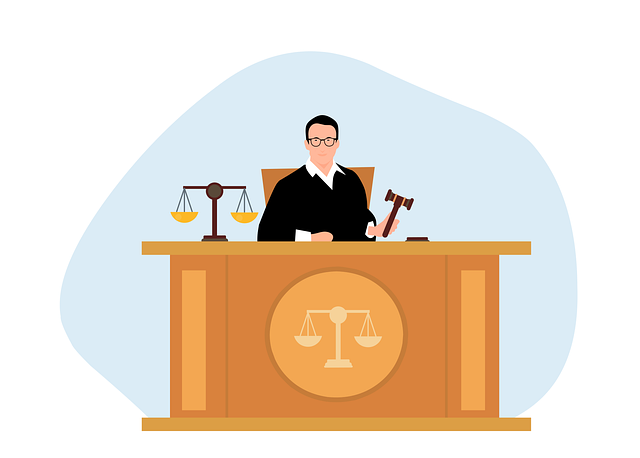Sidewalk Trip and Fall: Reporting Guide for Effective Communication with Authorities

Knowing when to report a sidewalk trip and fall is crucial for safety and potential compensation. Do…….
In the intricate web of urban infrastructure, a seemingly simple concept—the act of walking on a sidewalk without incident—can mask a complex phenomenon known as “sidewalk trip and fall.” This term encompasses a range of issues, from minor stumbles to severe injuries, all stemming from uneven or hazardous sidewalks. The impact of these incidents extends far beyond the physical realm, affecting individuals, communities, and even entire economies.
This article delves into the multifaceted world of sidewalk trip and falls, exploring its causes, consequences, and potential solutions. By examining various aspects, from global trends to technological innovations and policy interventions, we aim to provide a comprehensive understanding of this critical issue and its role in shaping urban environments.
Definition: Sidewalk trip and fall refers to incidents where individuals sustain injuries or experience accidents while navigating sidewalks, typically due to uneven terrain, obstacles, or inadequate maintenance. It involves a combination of environmental factors, human behavior, and individual vulnerabilities.
Core Components:
Historical Context:
The concept of sidewalk trip and fall has been a concern for urban planners and policymakers since the rise of modern cities. As urbanization accelerated during the industrial revolution, sidewalks became essential components of urban infrastructure. However, with increasing population density and age-related changes in the demographics, the issue of safe pedestrian mobility gained prominence.
Over time, various standards and regulations have been developed to address sidewalk safety. For instance, the Americans with Disabilities Act (ADA) in the United States has significantly influenced the design and maintenance of sidewalks, ensuring accessibility for individuals with disabilities. Similarly, many countries have implemented building codes and guidelines to promote safer walking environments.
The impact of sidewalk trip and fall is not confined to specific regions; it is a global concern. According to the World Health Organization (WHO), falls are a leading cause of injury-related deaths worldwide, with older adults disproportionately affected. This trend underscores the urgency of addressing sidewalk safety on an international scale.
Regional Variations:
Emerging Trends:
The economic implications of sidewalk trip and fall are far-reaching, impacting various sectors:
Technology plays a pivotal role in enhancing sidewalk safety:
Effective policy frameworks are essential for addressing sidewalk trip and fall:
Despite significant efforts, several challenges hinder the effective addressing of sidewalk trip and fall:
Proposed Solutions:
Case 1: Amsterdam’s Smart Sidewalks
The city of Amsterdam has implemented an innovative approach by integrating smart sensors into its sidewalks. These sensors detect pedestrian traffic, monitor surface conditions, and provide real-time data to city authorities. This technology allows for proactive maintenance, ensuring safer walking environments. As a result, Amsterdam has seen a significant reduction in trip and fall incidents, particularly in the elderly population.
Case 2: Tokyo’s Accessibility Initiatives
Tokyo, known for its bustling streets, has made remarkable strides in sidewalk accessibility. The city has invested heavily in raising awareness about the needs of individuals with disabilities, resulting in better-designed sidewalks. The use of tactile paving and audible signals at crosswalks has improved navigation for visually impaired pedestrians. These initiatives have not only enhanced safety but also fostered a more inclusive urban environment.
Case 3: New York City’s Sidewalk Repair Program
New York City launched a comprehensive sidewalk repair program, addressing years of deferred maintenance. This initiative involved repairing and replacing curbs, gutters, and sidewalks, improving accessibility and reducing hazards. The program was met with positive feedback from residents and visitors alike, showcasing the impact of dedicated resources on sidewalk safety.
The future of sidewalk trip and fall prevention looks promising, driven by technological advancements and a growing emphasis on urban sustainability:
Sidewalk trip and fall is a multifaceted issue that demands comprehensive attention from urban planners, policymakers, and communities worldwide. By understanding its causes, global implications, and the potential of emerging technologies, we can work towards creating safer, more inclusive urban environments. The case studies presented highlight successful strategies, offering valuable insights for cities striving to address this critical concern.
As urbanization continues apace, investing in safe sidewalks is not just a matter of public health and safety; it is an investment in the overall well-being and prosperity of our communities. By embracing innovative solutions and fostering collaboration, we can navigate the future of urban mobility with greater confidence and resilience.
Q: How do I know if my local sidewalks are safe?
A: Check your city’s website or contact local authorities for sidewalk safety ratings and inspection reports. Many cities provide maps and data on sidewalk conditions, allowing residents to assess the safety of their neighborhood routes.
Q: What can individuals do to reduce the risk of tripping?
A: Individuals can stay alert while walking, keep a safe speed, wear appropriate footwear, and use canes or walkers for added stability if needed. Regularly reporting hazards to local authorities is also beneficial.
Q: Are there any legal obligations for property owners regarding sidewalk safety?
A: Yes, many jurisdictions have laws holding property owners responsible for maintaining safe sidewalks adjacent to their properties. Negligence in upkeep can lead to liability claims and legal consequences.
Q: How effective are public awareness campaigns in preventing trip and falls?
A: Public awareness campaigns play a crucial role by educating individuals about trip hazards and safe walking practices. They encourage behavioral changes, leading to a reduction in incidents, especially when combined with infrastructure improvements.
Q: Can technology completely eliminate sidewalk trip and fall risks?
A: While technology can significantly enhance safety, it cannot eliminate all risks. However, smart city technologies and advanced maintenance robots can reduce hazards and improve response times to issues, making sidewalks safer overall.

Knowing when to report a sidewalk trip and fall is crucial for safety and potential compensation. Do…….

Sidewalk trip and falls can cause significant injuries, with compensation depending on severity and…….

Sidewalk trip and falls, caused by hazardous conditions like cracks or debris, result in injuries an…….

Sidewalk trip and fall accidents are common, causing severe injuries to pedestrians, especially the…….

After a sidewalk trip and fall, prioritize safety, document the incident (including date, time, loca…….

A sidewalk trip and fall can cause varying injuries, from minor to severe, often due to hazardous co…….

Local governments and property owners have a legal duty to maintain safe sidewalks, clearing snow an…….

A sidewalk trip and fall can result in injuries, property damage, and medical expenses, making indiv…….

Understanding jurisdiction-specific laws regarding sidewalk trip and falls is crucial for both prope…….

Sidewalk trip and fall lawsuits address pedestrian injuries caused by hazardous public walkways, foc…….